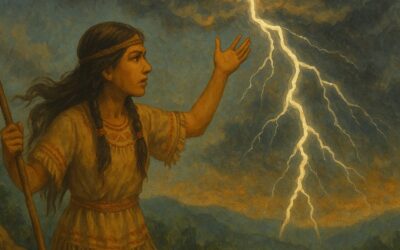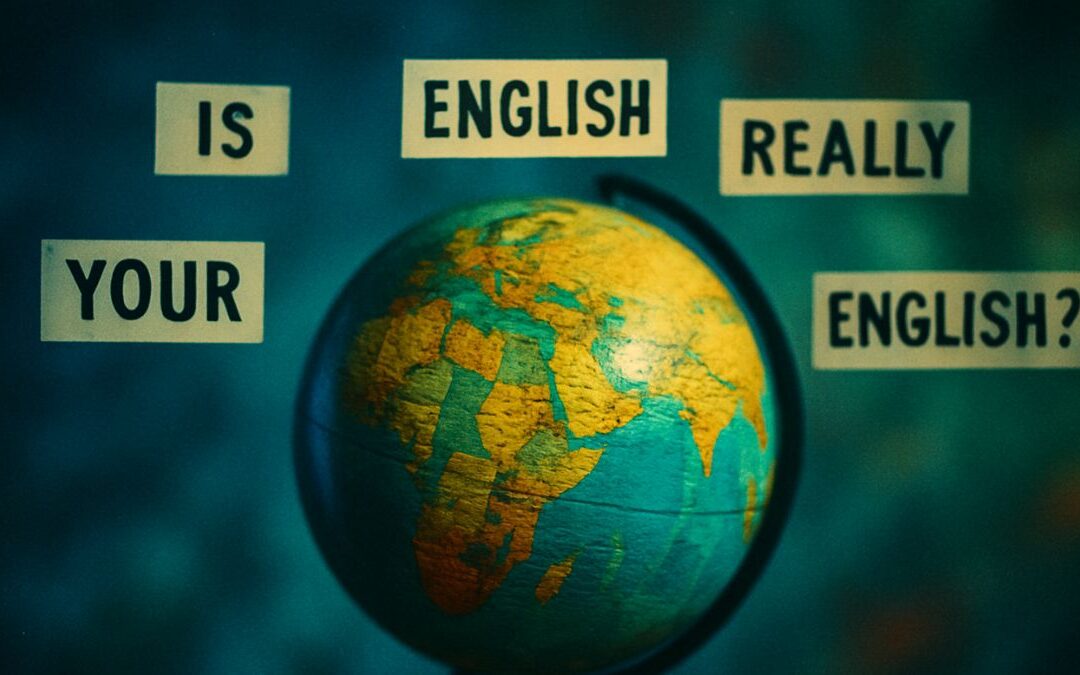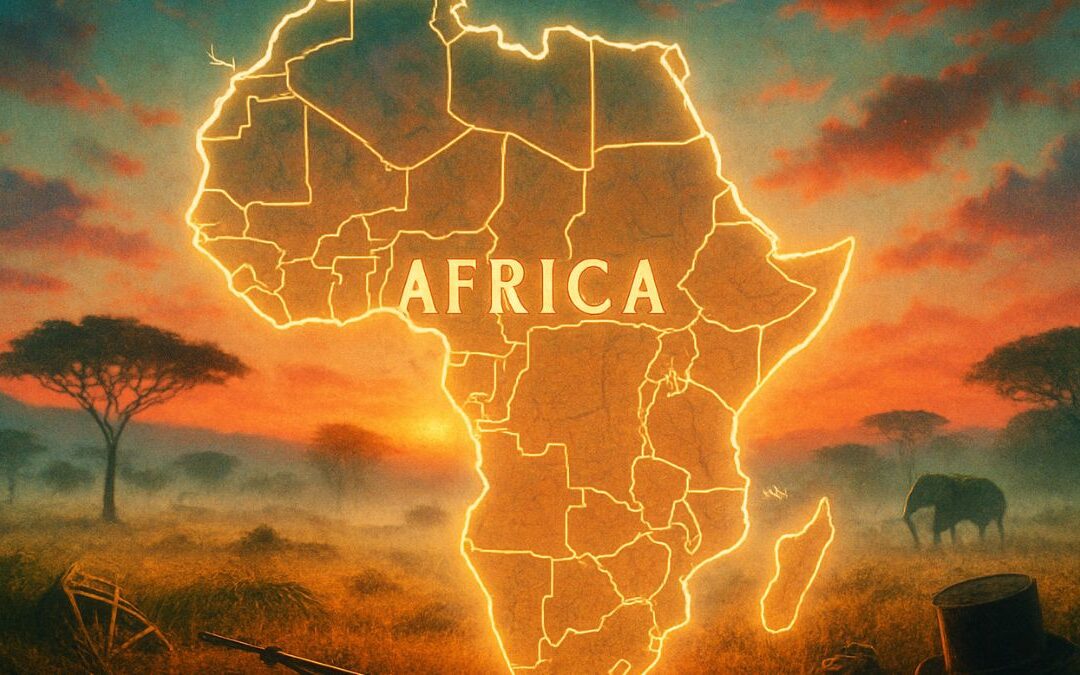- The Dawn of a Deity: An Introduction to Quetzalcoatl
- The Genesis of a God: Birth and Early Legends
- The Polymathic Deity: Aspects and Attributes of Quetzalcoatl
- The Perilous Price of Purity: Quetzalcoatl and the Tale of Topiltzin Ce Acatl Quetzalcoatl
- Echoes Through Time: The Enduring Legacy of Quetzalcoatl
- The Serpent and the Bird: Deciphering the Symbolism
- Beyond the Myth: Quetzalcoatl in Contemporary Thought
- Let’s Learn Vocabulary in Context
- Let’s Discuss:
- Learn with AI
- Frequently Asked Questions
- Who is Quetzalcoatl in Mesoamerican mythology?
- What role did Quetzalcoatl play in the creation of humanity?
- What are some of Quetzalcoatl’s key attributes and domains?
- How does the story of Topiltzin Ce Acatl Quetzalcoatl relate to the deity?
- What is the significance of the “Feathered Serpent” symbolism?
- How widespread was the veneration of Quetzalcoatl in Mesoamerica?
- Did Quetzalcoatl’s legacy survive the Spanish conquest?
- What contemporary relevance does Quetzalcoatl’s story hold?
- Let’s Play & Learn
The Dawn of a Deity: An Introduction to Quetzalcoatl
In Mesoamerican mythology, few figures command as much reverence and intrigue as Quetzalcoatl. More than just a deity, this Feathered Serpent embodies a complex amalgamation of creation, wisdom, and the very essence of life itself. To delve into the saga of Quetzalcoatl is to journey into the heart of the Aztec civilization, a sophisticated society whose cosmology was as intricate as their calendrical systems. Far from a mere idol, Quetzalcoatl was a cornerstone of their worldview, influencing everything from agricultural practices to artistic expression. His story is not just a tale of gods and mortals, but a profound reflection of humanity’s enduring quest to comprehend the universe and its myriad mysteries. So, prepare to shed your preconceived notions of mythical beings, for Quetzalcoatl is no ordinary serpent, nor a simplistic god. He is a multi-faceted enigma, a force of nature and culture intertwined, whose legacy continues to ripple through time, captivating scholars and enthusiasts alike.
The Genesis of a God: Birth and Early Legends
The origins of Quetzalcoatl are as nebulous and captivating as the mists that shroud ancient temples. While various myths offer differing accounts of his genesis, a prevailing narrative posits his birth from the primordial union of Ometecuhtli and Omecihuatl, the dualistic deities of creation who resided in the uppermost heavens. This celestial parentage immediately imbues Quetzalcoatl with an elevated status, marking him as a being of immense cosmic significance. In some versions, he is one of four Tezcatlipocas, powerful brother deities who shaped the world. Yet, unlike his often tumultuous and destructive siblings, Quetzalcoatl is consistently portrayed as a benevolent force, a bringer of order and enlightenment.
One of the most foundational myths surrounding Quetzalcoatl involves his pivotal role in the creation of humanity. Legend has it that after the destruction of previous cosmic eras, the gods convened to decide the fate of a new world. It was Quetzalcoatl, driven by compassion and a yearning for life, who descended into Mictlan, the underworld, to retrieve the bones of the ancestors. This perilous journey, fraught with challenges from the formidable Lord and Lady of Mictlan, Mictlantecuhtli and Mictecacihuatl, demonstrates his unwavering determination. With cunning and resilience, he managed to escape with the precious relics. Upon his return, the gods, led by the astute Cihuacoatl, ground the bones into a fine powder, over which Quetzalcoatl bled, imbuing the dust with the divine spark of life. This act of self-sacrifice, the ultimate gesture of creation, cemented his status as the patron deity of humanity, a benevolent father figure responsible for our very existence. This myth, deeply embedded in Aztec cosmology, highlights Quetzalcoatl’s profound connection to life, regeneration, and the cyclical nature of existence.
The Polymathic Deity: Aspects and Attributes of Quetzalcoatl
Quetzalcoatl was a deity of astonishing versatility, embodying a plethora of attributes that made him indispensable to Aztec society. He was, first and foremost, the god of wind, known as Ehecatl-Quetzalcoatl. His breath was believed to precede the rain, sweeping away impurities and signaling the arrival of life-giving storms. This aspect of his divinity was crucial for agricultural civilizations, as wind was often a harbinger of much-needed precipitation. Temples dedicated to Ehecatl-Quetzalcoatl were often circular, designed to facilitate the unimpeded flow of air, a testament to the reverence for his airy dominion.
Beyond his meteorological prowess, Quetzalcoatl was revered as the patron of priests, merchants, and artisans. He was the divine embodiment of knowledge, learning, and craftsmanship. It was believed that he bestowed upon humanity the gift of agriculture, teaching them how to cultivate maize, the staple crop of Mesoamerica. This act transformed nomadic hunter-gatherer societies into settled agricultural communities, a monumental leap in human development. He was also credited with inventing the calendar, a complex system that governed every aspect of Aztec life, from religious ceremonies to agricultural cycles. Furthermore, he was the progenitor of writing, art, and all manner of sophisticated cultural practices. The very act of creation, whether artistic or intellectual, was seen as an emanation of Quetzalcoatl’s divine influence. His dominion over these facets of human endeavor paints a picture of a god deeply invested in the intellectual and cultural flourishing of his people.
Perhaps most profoundly, Quetzalcoatl was the god of dawn, light, and the morning star (Venus). This association further solidified his benevolent nature, as he was seen as a bringer of new beginnings, dispelling the darkness of ignorance and ushering in eras of enlightenment. The cyclical appearance of Venus in the sky, both as a morning and evening star, mirrored the Aztec understanding of time as a series of cycles, with Quetzalcoatl presiding over these celestial rhythms. This celestial connection made him a figure of immense hope and renewal.
The Perilous Price of Purity: Quetzalcoatl and the Tale of Topiltzin Ce Acatl Quetzalcoatl
The narrative surrounding Quetzalcoatl is not merely a collection of divine acts; it also encompasses a deeply human, and often tragic, story of a mortal priest-king who bore his name: Topiltzin Ce Acatl Quetzalcoatl. This legendary ruler of the Toltecs, often conflated with the deity himself, is a figure of immense historical and mythological significance. He was a devout follower of the original Quetzalcoatl, dedicated to the peaceful and intellectual tenets associated with the Feathered Serpent. He championed human sacrifice of smaller animals and butterflies over the widespread human sacrifice practiced by other Mesoamerican cults, a progressive stance that set him apart.
However, his puritanical ideals and opposition to human sacrifice ultimately led to his downfall. The myth recounts how Tezcatlipoca, his mischievous and often malevolent brother deity, along with his allies, sought to undermine Topiltzin’s rule and corrupt his moral standing. Through an elaborate deception involving intoxicating pulque and a veiled woman, Tezcatlipoca tricked Topiltzin into breaking his priestly vows, leading to a profound sense of shame and spiritual defilement. This act, whether literal or symbolic, forced Topiltzin to abdicate his throne and embark on an arduous journey of exile.
His departure is often depicted as a solemn procession towards the east, towards the rising sun. In some versions, he immolates himself upon a pyre, his ashes rising into the heavens to become the morning star. In others, he sails away on a raft of serpents, promising to return from the east in a future calendrical cycle. This prophecy of return would later have disastrous consequences for the Aztecs, as the arrival of the Spanish conquistador Hernán Cortés from the east in 1519, coinciding with the prophesied year of Quetzalcoatl’s return (Ce Acatl, or One Reed), was interpreted by some as the fulfillment of this ancient prophecy. This grave misinterpretation sowed seeds of doubt and fear, ultimately contributing to the downfall of the Aztec Empire. The story of Topiltzin serves as a cautionary tale, illustrating the fragility of even the most virtuous intentions in the face of political intrigue and divine manipulation.
Echoes Through Time: The Enduring Legacy of Quetzalcoatl
The influence of Quetzalcoatl extended far beyond the Aztec Empire, permeating the cultural and religious landscapes of numerous Mesoamerican civilizations. His iconography, characterized by the distinctive feathered serpent motif, can be found in archaeological sites across the region, from Teotihuacan to Chichen Itza. He was known by various names in different cultures—Kukulkan to the Maya, Gucumatz to the Quiché Maya—but his fundamental attributes as a creator deity, bringer of knowledge, and symbol of renewal remained consistent. This widespread veneration underscores his foundational importance in the broader Mesoamerican worldview.
Even after the Spanish conquest and the suppression of indigenous religions, the figure of Quetzalcoatl lingered in the collective consciousness. His myths were often interwoven with Christian narratives, creating a fascinating syncretism that allowed some aspects of the pre-Hispanic worldview to endure. In modern times, Quetzalcoatl has experienced a resurgence of interest, becoming a symbol of indigenous identity, cultural heritage, and spiritual awakening. He is invoked in art, literature, and even political movements, representing a connection to a rich and complex past.
The Serpent and the Bird: Deciphering the Symbolism
The very name “Quetzalcoatl” is a compound of two Nahuatl words: quetzalli, referring to the iridescent green feathers of the quetzal bird, and coatl, meaning serpent. This seemingly straightforward etymology belies a profound symbolic depth. The serpent, throughout many ancient cultures, often represents the earthly realm, cycles of life and death, and primal energy. Its shedding of skin symbolizes rebirth and transformation. The quetzal bird, with its vibrant plumage and ability to soar through the skies, embodies the celestial, the ethereal, and spiritual ascension.
Thus, Quetzalcoatl, the Feathered Serpent, represents the harmonious union of seemingly disparate elements: the earthly and the celestial, the material and the spiritual, wisdom and power. He is the bridge between worlds, the embodiment of balance and the synthesis of opposing forces. This duality is not one of conflict but of complementary interdependence, a philosophical concept deeply embedded in Mesoamerican thought. He is the fertile earth and the life-giving sky, the intellect and the instinct, the creator and the sustainer. Understanding this intricate symbolism is key to unlocking the true essence of Quetzalcoatl and appreciating his enduring relevance.
Beyond the Myth: Quetzalcoatl in Contemporary Thought
In an increasingly globalized world, the myths of ancient civilizations offer not just historical insights but also timeless wisdom. Quetzalcoatl, with his emphasis on knowledge, creativity, and the delicate balance of nature, presents a compelling archetype for contemporary reflection. His story encourages us to ponder the consequences of unchecked ambition, the importance of intellectual pursuits, and the interconnectedness of all life.
The fall of Topiltzin Ce Acatl Quetzalcoatl, brought about by manipulation and the abandonment of his core principles, serves as a poignant reminder of the fragility of even the noblest intentions. It speaks to the eternal struggle between enlightenment and ignorance, between peaceful coexistence and destructive impulses. In a world grappling with environmental degradation, social discord, and the constant pursuit of material gain, the benevolent wisdom attributed to Quetzalcoatl offers a powerful counter-narrative, urging us to seek harmony, cultivate knowledge, and respect the intricate web of life that sustains us all. He reminds us that true power lies not in domination, but in understanding, compassion, and the pursuit of a balanced existence.
Let’s Learn Vocabulary in Context
Let’s dive into some of the words and phrases that really helped bring the story of Quetzalcoatl to life, and see how you can use them in your own conversations and writing. Sometimes, when we talk about ancient myths, the language can seem a bit formal, but these words are actually incredibly useful in everyday situations.
First up, we had tapestry. When we described the “vibrant tapestry of Mesoamerican mythology,” we weren’t talking about an actual woven cloth. Here, “tapestry” is used metaphorically to mean a complex or diverse combination of things. Imagine a beautiful, intricately woven rug with lots of different colors and patterns. That’s what “tapestry” evokes – a rich and varied collection. You could say, “The city’s history is a rich tapestry of cultures and traditions,” or “Her life was a tapestry of joy and sorrow.” It’s a fantastic way to describe something that’s made up of many different, interwoven parts, creating a whole that’s greater than the sum of its parts. It suggests complexity and beauty, like a story with many threads.
Next, we encountered cosmology. This word sounds quite grand, and it refers to the study of the universe, including its origin, evolution, and structure. In our article, it was about the Aztec understanding of the universe. But you can use “cosmology” in a broader sense too. For instance, you could be talking about “a personal cosmology,” referring to someone’s individual beliefs about how the world works and their place in it. Or, if you’re discussing a philosophical text, you might analyze its “underlying cosmology.” It’s not just for scientists or ancient civilizations; it’s about any comprehensive system of beliefs about the order of existence.
We also talked about Quetzalcoatl being a cornerstone. When we said he was “a cornerstone of their worldview,” we meant he was a fundamental and essential part of it. Think of a cornerstone in a building – it’s the very first stone laid, and it supports everything else. If you say something is a cornerstone, you’re emphasizing its crucial importance. For example, “Education is the cornerstone of a thriving society,” or “Trust is the cornerstone of any strong relationship.” It’s a powerful metaphor for something foundational and indispensable.
Then there was nebulous. We described the origins of Quetzalcoatl as “nebulous and captivating.” “Nebulous” means vague, unclear, or ill-defined, like a cloud. It suggests something that is hard to pin down or fully understand. You might say, “His plans for the future are still a bit nebulous,” or “The details of the agreement remain nebulous.” It’s a great word to use when something lacks clear form or precision, adding a touch of sophisticated uncertainty to your description.
The word prevalent came up when discussing the “prevailing narrative” of Quetzalcoatl’s birth. “Prevalent” means widespread, common, or generally accepted. If something is prevalent, it means it’s frequently encountered or widely held. For instance, “Smartphones are highly prevalent in modern society,” or “The belief in good luck charms is prevalent in many cultures.” It’s a useful word when you want to indicate that something is common or dominant in a particular context.
When we mentioned Quetzalcoatl’s “unwavering determination,” we used a great phrase. Unwavering means steady, firm, and resolute, without faltering or wavering. It paints a picture of someone who sticks to their path no matter what. You could describe someone’s “unwavering commitment to justice” or their “unwavering loyalty.” It implies strength of character and a refusal to give up.
Another strong word was imbuing. We said Quetzalcoatl “imbuing the dust with the divine spark of life” by bleeding over the bones. To imbue means to inspire or permeate with a feeling or quality. It’s like infusing something with a particular essence. You might say, “The artist imbued her paintings with a sense of melancholic beauty,” or “His leadership imbued the team with confidence.” It’s a more evocative way of saying “to fill” or “to instill.”
We also came across progenitor. Quetzalcoatl was described as the “progenitor of writing, art, and all manner of sophisticated cultural practices.” A “progenitor” is an originator, a founder, or a creative ancestor. It’s someone or something that began something important. You could say, “He is considered the progenitor of modern jazz,” or “The company’s founder was a true progenitor of innovation.” It implies a significant starting point, someone who truly pioneered a field.
Then we had puritanical. We discussed Topiltzin’s “puritanical ideals.” This word refers to a strict adherence to a moral or religious code, often implying a severe or rigid attitude towards pleasure or indulgence. It’s not always negative; sometimes it can simply describe someone who is very disciplined. You might talk about a “puritanical approach to diet” or a “puritanical work ethic.” It suggests a strong commitment to what is perceived as morally correct, sometimes to the point of being overly strict.
Finally, we used poignant. The fall of Topiltzin was described as a “poignant reminder.” “Poignant” means evoking a keen sense of sadness, regret, or nostalgia. It describes something that touches your emotions deeply, often with a hint of bittersweetness. A “poignant melody” might bring tears to your eyes, or a “poignant farewell” could leave a lasting impression. It’s a wonderful word to use when something stirs deep feelings and creates a lasting emotional impact. So, as you can see, these words aren’t just for ancient myths; they’re powerful tools for expressing complex ideas and emotions in your everyday communication.
Vocabulary Quiz
Let’s Discuss:
- The Nature of Divinity: How do the multifaceted roles of Quetzalcoatl (god of wind, creator, patron of arts, morning star) compare to deities in other mythologies you might be familiar with?
- Consider discussing the concept of polytheism and how different cultures assign diverse responsibilities to their gods. Are there common archetypes or surprising divergences? Think about how these diverse roles might reflect the values and concerns of the societies that worshipped them. For instance, why would a deity be associated with both wind and knowledge? What does that combination suggest about their worldview?
- The Impact of Prophecy: The prophecy of Quetzalcoatl’s return had profound consequences for the Aztec Empire. How do prophecies, both religious and secular, shape human history and decision-making?
- You could explore famous historical prophecies and their effects, or even consider modern-day “prophecies” (like economic predictions or technological forecasts). Discuss the psychological impact of belief in prophecy—how it can inspire hope, fear, or even lead to self-fulfilling outcomes. Are there any examples in your own life where a perceived “prophecy” influenced actions?
- The Blending of Worlds: The story of Topiltzin Ce Acatl Quetzalcoatl, the priest-king, often merges with the deity himself. What does this blurring of lines between mortal and divine reveal about the Aztec understanding of leadership and spiritual authority?
- Think about other cultures where rulers were seen as divine or divinely appointed. How does this elevate the status of leaders? What are the potential benefits and drawbacks of such a belief system? Does it create a more stable society or does it make it vulnerable to exploitation?
- Symbolism in Mythology: The symbolism of the “Feathered Serpent”—combining earth (serpent) and sky (feathers)—is incredibly rich. What other powerful symbols or archetypes have you encountered in myths or even modern stories, and what universal truths do they convey?
- Consider symbols that represent duality, transformation, or balance. Discuss how these symbols resonate across different cultures and time periods. What makes a symbol so universally impactful? You might think about symbols from literature, dreams, or even popular culture.
- Relevance in Modernity: In what ways can the enduring myths and legends of figures like Quetzalcoatl offer valuable insights or lessons for contemporary society?
- Think about themes such as environmental stewardship, the pursuit of knowledge, the dangers of hubris, or the importance of community. Are there elements of Quetzalcoatl’s story that speak to current global challenges or individual struggles? How can ancient wisdom inform our present and future actions?
Learn with AI
Disclaimer:
Because we believe in the importance of using AI and all other technological advances in our learning journey, we have decided to add a section called Learn with AI to add yet another perspective to our learning and see if we can learn a thing or two from AI. We mainly use Open AI, but sometimes we try other models as well. We asked AI to read what we said so far about this topic and tell us, as an expert, about other things or perspectives we might have missed and this is what we got in response.
Welcome back! As your expert on all things mythological and historical, I’d love to add a few layers to our understanding of Quetzalcoatl that might have been less emphasized.
First, it’s crucial to understand the dynamic between Quetzalcoatl and his often-antagonistic brother, Tezcatlipoca. While we touched upon Tezcatlipoca’s role in the downfall of Topiltzin, it’s worth noting that these two deities represent a fundamental cosmic duality in Aztec thought—a kind of perpetual push and pull. Quetzalcoatl, the god of creation, light, and life, often stands in stark contrast to Tezcatlipoca, who embodies darkness, sorcery, and destruction. They are not merely good and evil, but rather complementary forces necessary for the universe’s cyclical nature. Their conflicts and collaborations drive the various “suns” or cosmic eras of Aztec creation myths. This isn’t just sibling rivalry; it’s a profound philosophical statement about the inherent balance and tension in the cosmos. Understanding this dynamic adds a whole new dimension to Quetzalcoatl’s story, showing him not just as a benevolent figure in isolation, but as part of a grander, more complex divine drama.
Another point that often gets overlooked is the sheer intellectual sophistication associated with Quetzalcoatl. We mentioned him as the patron of priests and the inventor of the calendar and writing. But let’s really lean into what that means. The Aztec calendar, specifically the Xiuhpohualli (365-day solar calendar) and the Tonalpohualli (260-day ritual calendar), was incredibly precise, reflecting a deep understanding of astronomy and mathematics. The ideographic and phonetic system of Aztec writing was complex and rich, allowing for the recording of history, genealogies, and religious texts. When we say Quetzalcoatl brought these gifts, it’s not just a nice myth; it’s an acknowledgement that the Aztecs attributed their monumental intellectual achievements to this divine figure. He was the embodiment of human potential for reason, innovation, and organized society. It underscores that for the Aztecs, knowledge and spiritual enlightenment were inextricably linked, and that Quetzalcoatl was the ultimate source of both.
Finally, let’s consider the concept of “cultural appropriation” in a historical context related to Quetzalcoatl. His widespread veneration across Mesoamerica—from the Toltecs to the Maya (as Kukulkan)—isn’t just about his importance; it speaks to the interconnectedness and diffusion of religious ideas in pre-Columbian Mesoamerica. Cultures borrowed, adapted, and reinterpreted deities and myths from one another. This wasn’t seen as theft, but as a natural exchange, enriching each civilization’s pantheon. The core attributes remained, but the specific stories and local contexts would shift. This is a fascinating glimpse into how ancient belief systems evolved through interaction, trade, and even conquest, highlighting a dynamic cultural landscape that was far from static. It reminds us that myths are living narratives, constantly reshaped by human interaction.
These are just a few more threads in the rich tapestry of Quetzalcoatl’s story, showing how deep and nuanced these ancient myths truly are.
Frequently Asked Questions
Who is Quetzalcoatl in Mesoamerican mythology?
Quetzalcoatl is a principal deity in Mesoamerican mythology, particularly revered by the Aztec civilization. His name translates to “Feathered Serpent,” a powerful symbolic representation of the union between the earthly (serpent) and the celestial (quetzal bird). He is not simply a god but a complex figure embodying creation, wisdom, life, and the very essence of cosmic balance. He was a cornerstone of the Aztec worldview, influencing their culture, art, and understanding of the universe.
What role did Quetzalcoatl play in the creation of humanity?
According to a prominent myth, Quetzalcoatl played a crucial role in the creation of humanity after previous cosmic eras were destroyed. Driven by compassion, he descended into the underworld (Mictlan) to retrieve the bones of past ancestors. Despite challenges from the deities of Mictlan, he successfully escaped with the bones. The gods then ground these bones into a powder, and Quetzalcoatl bled over them, imbuing the dust with the divine spark of life. This act of self-sacrifice solidified his status as a benevolent patron deity of humanity.
What are some of Quetzalcoatl’s key attributes and domains?
Quetzalcoatl was a multifaceted deity with a wide range of attributes. He was the god of wind (Ehecatl-Quetzalcoatl), whose breath preceded rain and cleared the way for life-giving storms. He was also the patron of priests, merchants, and artisans, embodying knowledge, learning, and craftsmanship. He is credited with bringing humanity the gifts of agriculture (specifically maize cultivation), the calendar, writing, and art, thus fostering significant human development and cultural flourishing. Additionally, he was associated with dawn, light, and the morning star (Venus), symbolizing new beginnings and enlightenment.
How does the story of Topiltzin Ce Acatl Quetzalcoatl relate to the deity?
Topiltzin Ce Acatl Quetzalcoatl was a historical or legendary Toltec priest-king who bore the name of the deity and was a devout follower of his peaceful and intellectual tenets. He is often conflated with the deity in mythology. Topiltzin advocated for less extreme forms of sacrifice (animals, butterflies) compared to the human sacrifice common in other cults. However, his adherence to purity and opposition to human sacrifice led to his downfall. Tricked and corrupted by his brother deity Tezcatlipoca, Topiltzin was forced into exile, often depicted as journeying east and promising a return. This prophecy of return had a profound and negative impact on the Aztecs when Hernán Cortés arrived from the east in 1519.
What is the significance of the “Feathered Serpent” symbolism?
The name “Quetzalcoatl” literally means “Feathered Serpent,” combining the Nahuatl words for the quetzal bird (quetzalli) and serpent (coatl). This symbolism is deeply significant. The serpent represents the earthly realm, cycles of life and death, and primal energy, with its shedding of skin symbolizing rebirth. The quetzal bird, with its iridescent feathers and ability to fly, symbolizes the celestial, the spiritual, and ascension. Thus, the Feathered Serpent represents the harmonious union of these seemingly opposite elements – the earthly and the celestial, the material and the spiritual. He is a bridge between worlds, embodying balance, the synthesis of opposing forces, and the interconnectedness of life.
How widespread was the veneration of Quetzalcoatl in Mesoamerica?
The influence of Quetzalcoatl extended well beyond the Aztec Empire. His iconography and core attributes were recognized and revered across numerous Mesoamerican civilizations. He was known by different names, such as Kukulkan among the Maya and Gucumatz among the Quiché Maya, but his fundamental role as a creator deity, bringer of knowledge, and symbol of renewal remained consistent. Evidence of his veneration can be found in archaeological sites throughout the region, highlighting his foundational importance in the broader Mesoamerican worldview.
Did Quetzalcoatl’s legacy survive the Spanish conquest?
Yes, aspects of Quetzalcoatl’s legacy survived the Spanish conquest. Although indigenous religions were suppressed, elements of his myths were sometimes interwoven with Christian narratives, leading to a form of syncretism that allowed parts of the pre-Hispanic worldview to endure. In modern times, Quetzalcoatl has experienced a resurgence of interest and has become a powerful symbol of indigenous identity, cultural heritage, and spiritual connection to the past. He continues to be invoked in art, literature, and cultural movements.
What contemporary relevance does Quetzalcoatl’s story hold?
Quetzalcoatl’s story offers timeless wisdom for contemporary reflection. His emphasis on knowledge, creativity, and the delicate balance of nature provides a compelling archetype. The tale of Topiltzin’s fall serves as a reminder of the fragility of even the noblest intentions and the eternal struggle between enlightenment and destructive impulses. In a world facing environmental challenges and social discord, Quetzalcoatl’s benevolent wisdom encourages us to seek harmony, cultivate knowledge, and respect the interconnectedness of all life. He suggests that true power lies in understanding, compassion, and the pursuit of a balanced existence rather than in domination.










0 Comments